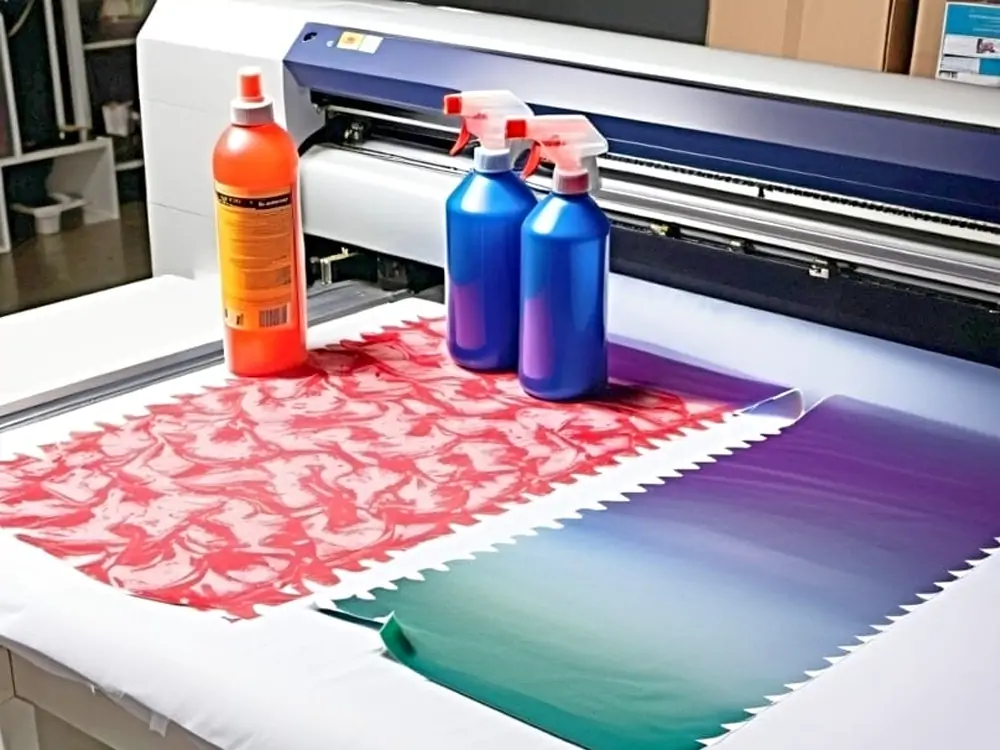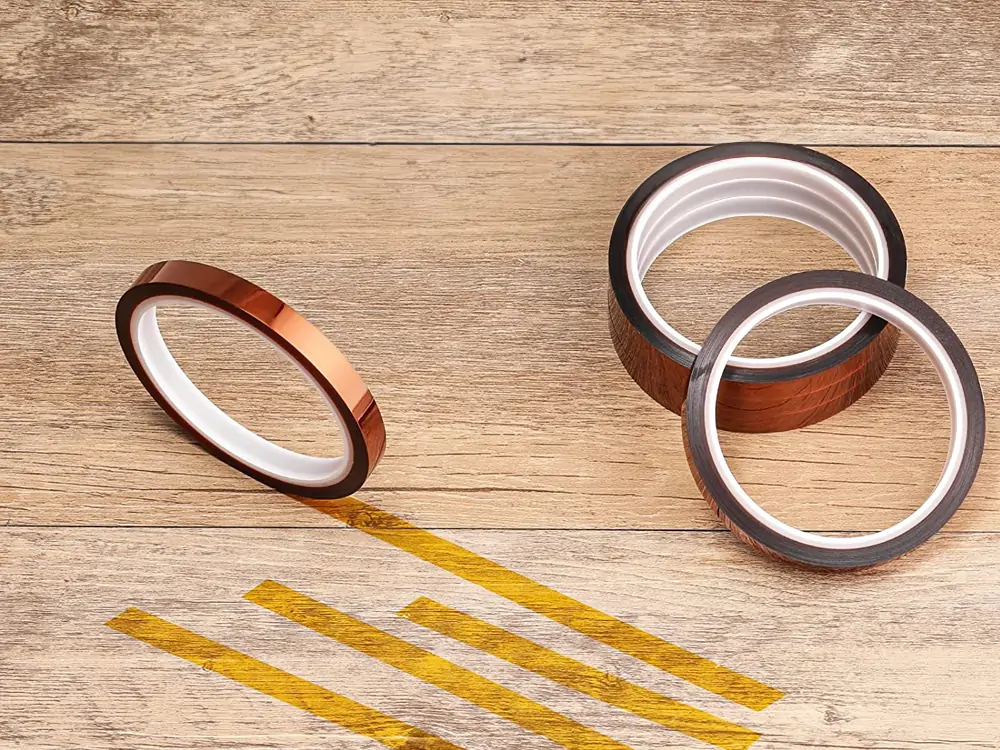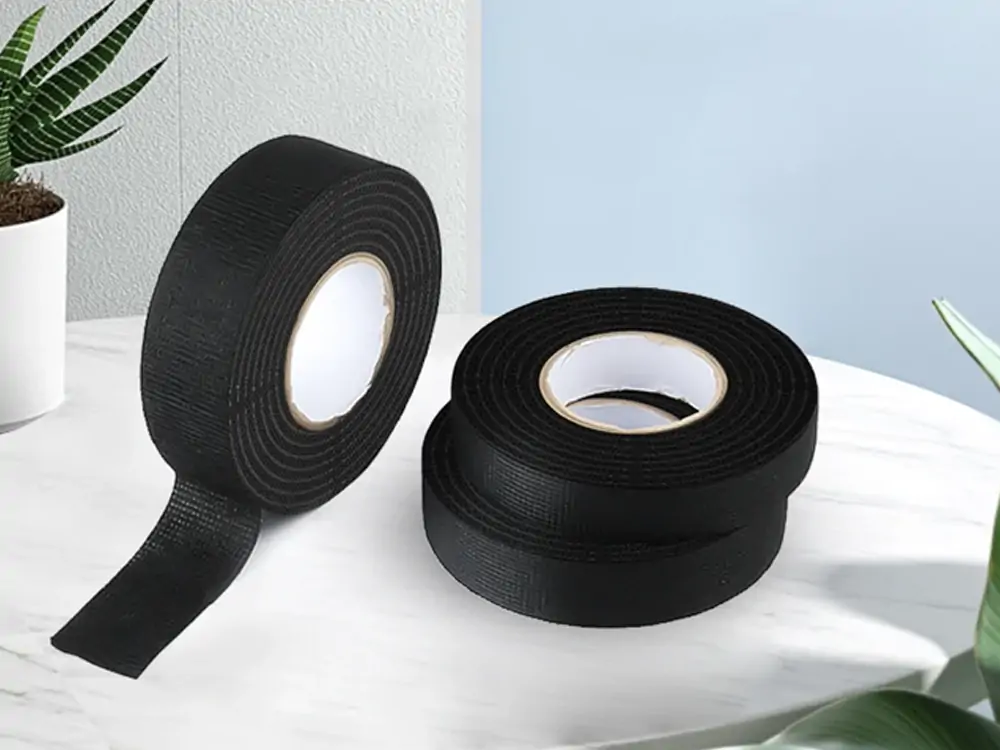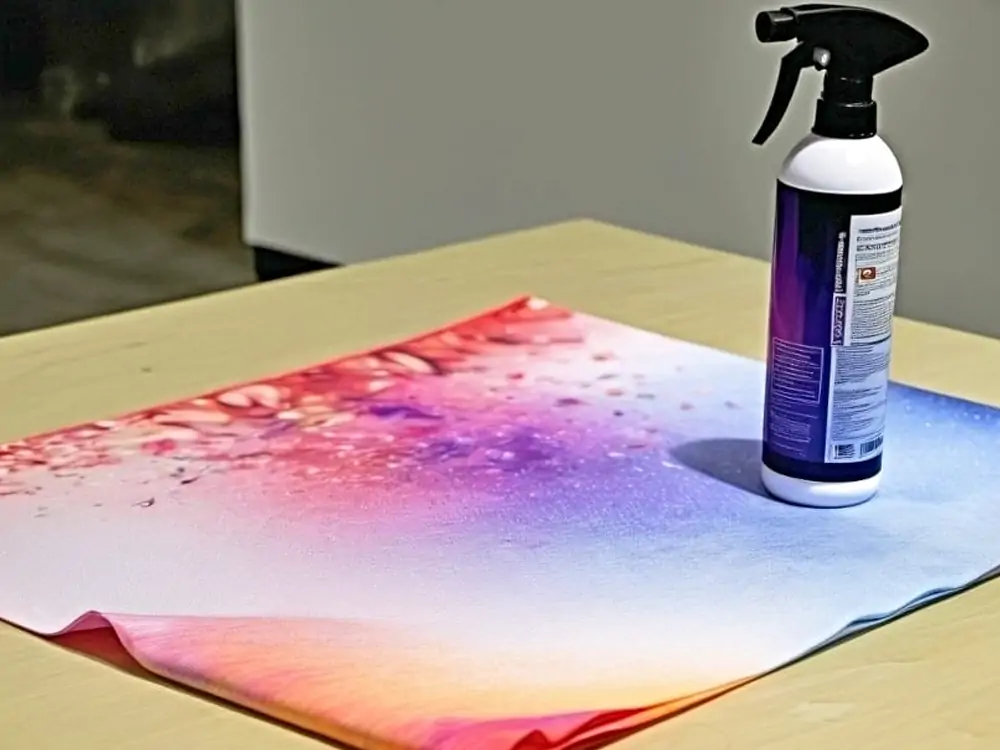In the sublimation process, choosing the correct adhesive is critical for realizing high-quality outcomes. Adhesive spray and heat-resistant tape are two common selections. Adhesive spray offers a broader coverage, appropriate for larger areas or uneven surfaces. Heat-resistant tape provides precise placement and clean removal. That makes it ideal for detailed designs. Both choices withstand a high temperature, confirming the transfer stays intact. The optimal between them depends on the specific needs of the project, such as material type, design complexity, and application method. Understanding the differences helps in making an informed decision for great results.

Choosing the Right Adhesive for the Sublimation Process: Key Criteria
Material Type:
Various resources need different adhesives. Heat-resistant tape works well on fabrics, ceramics, and metals. Adhesive spray is better for larger surfaces like wood.
Design Complexity:
For intricate designs, heat-resistant tape offers precise placement. It ensures the design stays in place during the heat press. The adhesive spray suits simpler, larger designs where even coverage is needed.
Heat Resistance:
Both adhesives must withstand high temperatures (up to 400°F or 204°C).
Application Method:
Heat-resistant tape is easy to apply and remove without leaving residue. It’s ideal for quick, small-scale projects. Adhesive spray requires careful application to avoid overspray. It provides a strong bond over large areas.
Residue and Cleanliness:
Choose an adhesive that leaves no residue after pressing. Heat-resistant tape peels off cleanly. Also, adhesive sprays might leave a sticky residue if not applied correctly.
Cost and Availability:
Consider your budget and the availability of the adhesive. Heat-resistant tape is often more affordable for small projects. However, the adhesive spray may be more cost-effective for larger runs.

What is Heat-resistant Tape?
Heat-resistant tape is a specialized adhesive tape designed to withstand high temperatures without losing its adhesive properties. It is made from materials such as polyimide, fiberglass cloth, aluminum foil, or silicone. That’s why it provides durability and resistance to heat, chemicals, and electrical insulation. It is used in industries like aerospace, automotive, electronics, and manufacturing to protect components. It offers strong adhesion, chemical resistance, and is often easy to apply without leaving residue.
Here’s a detailed discussion about its characteristics, benefits, and usage:
Characteristics of Heat-Resistant Tape
Material Composition:
Heat-resistant tapes are typically made from materials like polyimide, fiberglass cloth, aluminum foil, or silicone, each providing specific properties suited to different applications.
Temperature Range:
The operational temperature range varies depending on the tape. For example, polyimide tapes can withstand temperatures from -269°C to 400°C (-452°F to 752°F).
Thickness:
These tapes come in various thicknesses to accommodate different needs. Thicker tapes offer more insulation and protection. And, thinner tapes are more flexible and conformable
Adhesive Type:
The adhesive used in heat-resistant tapes is typically silicone-based or acrylic-based. That provides strong bonding at high temperatures.
Tensile Strength:
Heat-resistant tapes have high tensile strength. They can withstand significant stress and strain without breaking. And, it is crucial in high-temperature environments.
Flame Retardancy:
Many of these tapes are designed to be flame retardant. It adds an extra layer of safety in applications where fire hazards are a concern.
Electrical Properties:
Tapes like polyimide offer excellent dielectric strength, making them suitable for electrical insulation in high-temperature environments.
Usage Tips for Optimal Results
- Positioning:
Place the heat-resistant tape on the edges of the sublimation paper to secure it to the substrate. - Application:
Cut the tape to the desired length and apply it firmly to ensure a tight hold. - Heat Pressing:
Ensure the tape holds the sublimation paper in place during the heat transfer process. - Removal:
After pressing, remove the tape gently to avoid leaving residue or damaging the substrate. - Reuse:
If carefully removed, some heat-resistant tapes can be reused for multiple applications.

Advantages of Heat-Resistant Tape
Environmental Issues:
Generally, it is eco-friendly, but some tapes may contain materials that are not environmentally friendly.
Electrical Insulation:
Many heat-resistant tapes, such as polyimide (Kapton) tapes, provide excellent electrical insulation properties. This makes them suitable for protecting sensitive electronic components.
Chemical Resistance:
Heat-resistant tapes often exhibit strong resistance to chemicals, solvents, and oils. It helps maintain their integrity in various industrial applications.
What is Adhesive Spray?
Adhesive spray is an aerosol-based adhesive that is applied by spraying a fine mist of glue onto surfaces. It is used in various applications, including crafts, and especially in sublimation printing. This spray adhesive offers several unique characteristics and benefits. That makes it a versatile and efficient bonding solution.
Key Characteristics of sublimation adhesive spray
Aerosol Delivery:
- Uniform Application: The spray nozzle ensures a fine, even mist, allowing for a consistent layer of adhesive over the entire surface.
- Coverage: Suitable for both large and irregularly shaped surfaces. Ensures that all areas are adequately covered.
Types of Adhesives:
- Permanent: Provides a strong, lasting bond.
- Temporary: Allows for repositioning and easy removal.
- Repositionable: Offers the flexibility to adjust materials multiple times.
- Heat-Resistant: Specifically formulated to withstand high temperatures. That makes it ideal for sublimation.
Quick Drying:
Adhesive spray typically dries quickly, which speeds up the overall process and allows for faster handling and processing of materials.
Temporary Bond:
While strong enough to hold materials in place during processes like heat pressing, it can be easily removed afterward without leaving residue or causing damage.

Benefits of sublimation spray adhesive
- Ease of Use:
The spray application is simple and quick, reducing the time and effort needed compared to traditional glue or tape. - Even Coverage:
Ensures a uniform adhesive layer, preventing problems like air bubbles or weak spots in the bond. - Versatility:
Can be used on a wide range of materials, including paper, fabric, plastic, metal, and wood. - Flexibility:
Ideal for both temporary and permanent bonding needs. It highly depends on the formulation used.
Usage Tips of spray adhesive for sublimation
- Application:
Shake the can well before use. Hold it 6-8 inches from the surface and apply a light, even coat.
Spray in a well-ventilated area to avoid inhaling fumes. - Surface Preparation:
Ensure the surfaces to be bonded are clean, dry, and free from dust. This enhances the adhesive’s effectiveness. - Tackiness:
Allow the adhesive to become tacky (usually a few seconds to a minute) before pressing the materials together. This ensures a stronger bond. - Removal:
For temporary applications, the bonded materials can be separated easily. It can typically be cleaned with mild solvents or adhesive removers.
Advantages Over Other Adhesives
- Speed and Efficiency:
Faster application and drying times compared to liquid glues or tapes, especially on large surfaces. - Precision:
Allows for precise control over where and how much adhesive is applied. It is crucial for detailed or intricate work. - Less Mess:
Reduces the mess associated with liquid adhesives. It leads to a cleaner workspace and easier cleanup.
Heat-Resistant Tape vs. Adhesive Spray: Quick Comparison
| Feature | Heat-Resistant Tape | Adhesive Spray |
|---|---|---|
| Application Method | Manually applied by cutting and placing | Applied by spraying a fine mist over the surface |
| Coverage | Limited to edges or specific points | Covers the entire surface uniformly |
| Temperature Tolerance | Up to 400°F (204°C) | Up to 400°F (204°C) |
| Drying Time | None | Dries quickly, usually within seconds |
| Residue | Minimal to none when removed correctly | Minimal with proper application, but can leave residue if over-applied |
| Precision Placement | High, secure positioning | Moderate, depends on spray control |
| Ease of Use | Time-consuming, especially for large or complex designs | Quick and simple, ideal for large areas |
| Versatility | Less suitable for irregular or uneven surfaces | Highly versatile, works well on various shapes and surfaces |
| Flexibility | Limited flexibility, best for flat or slightly curved surfaces | Excellent flexibility, conforms to any surface shape |
| Reusability | Often reusable if removed carefully | single-use |
| Strength of Bond | Strong, secure bond | Strong temporary bond, easy to remove after sublimation process |
| Messiness | Clean, no mess | Can be messy if not applied in a controlled manner |
| Surface Preparation | Minimal, ensure surface is clean | Surface should be clean and dry; avoid overspray |
| Cost Efficiency | Can be cost-effective for small projects | Cost-effective for large areas and frequent use |
| Environmental Considerations | Generally low, but some tapes may contain materials not environmentally friendly | Aerosol sprays may have environmental impact due to propellants |
Conclusion
- Heat-Resistant Tape: Ideal for precise, small-scale applications requiring strong, without drying time. Suitable for projects where repositioning is needed. Also, for flat or slightly curved surfaces.
- Sublimation Adhesive Spray: Best for large areas and irregular shapes, offering quick and even coverage. It provides a strong temporary bond, making it efficient for the sublimation process. It requires proper ventilation and careful application to avoid residue and mess.
Choose based on the project’s size, surface shape, and need for precision or quick application. Both tools have their advantages and can complement each other in the sublimation process.
